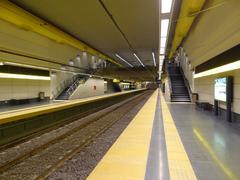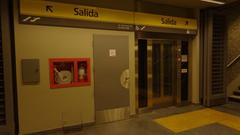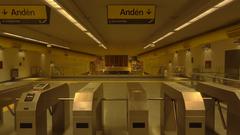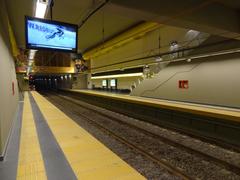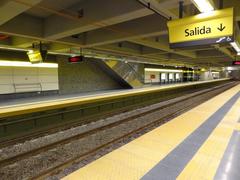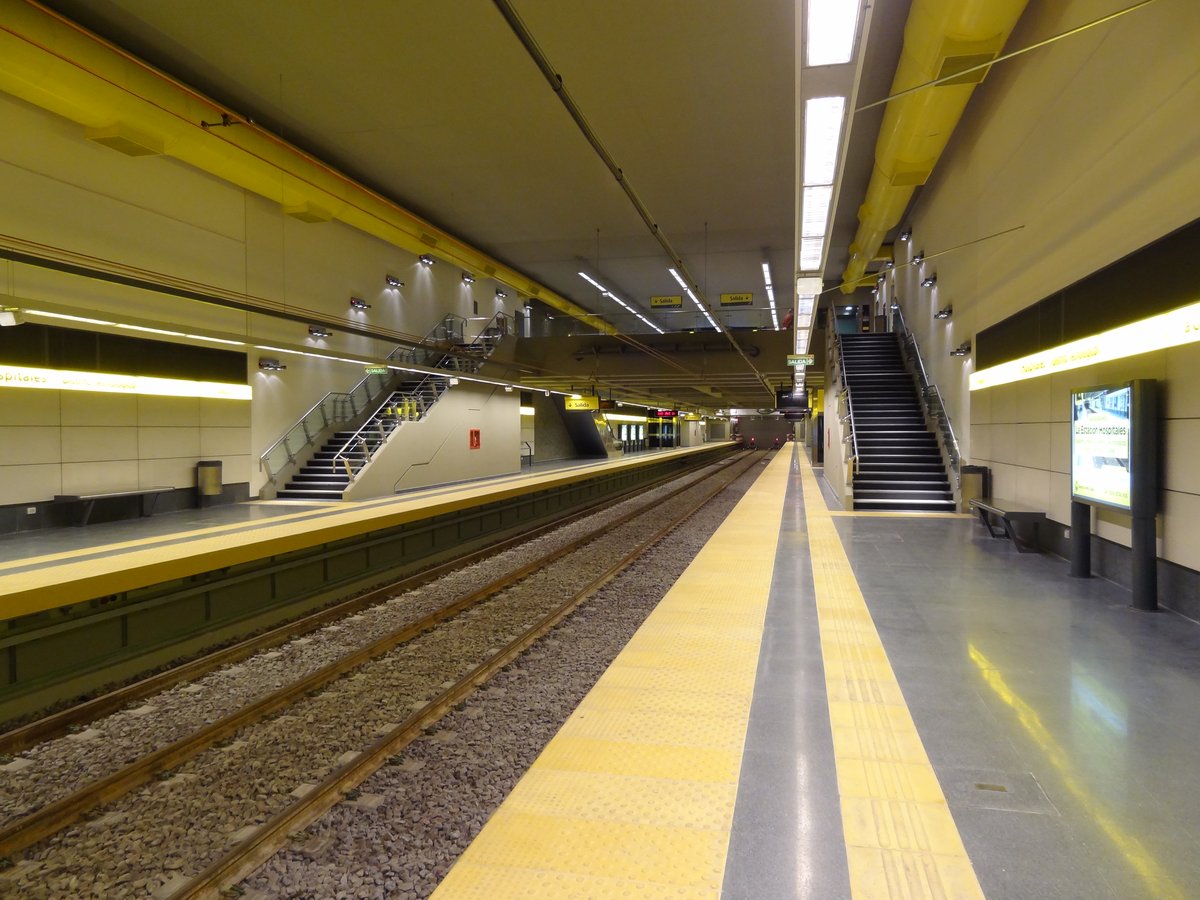
Hospitales Buenos Aires Visiting Hours, Tickets, and Travel Guide
Date: 14/06/2025
Introduction to Hospitales Buenos Aires: What Visitors Can Expect
Nestled in the southern sector of Buenos Aires, Hospitales is a neighborhood renowned for its deep-rooted healthcare heritage. It is home to some of the city’s most significant public hospitals, including Hospital General de Agudos José María Penna, Hospital de Infecciosas Francisco Javier Muñiz, and the British Hospital of Buenos Aires. These institutions have shaped not only the local landscape but also the city’s broader social and urban development, serving as pillars of public health and medical education (Patagonia Argentina; ExpatFocus).
While Hospitales is foremost known as a medical district, it features architectural diversity, a multicultural community, and proximity to some of Buenos Aires’ most vibrant historical neighborhoods, such as San Telmo, La Boca, and Parque Lezama. Visitors can enjoy the unique blend of healthcare history, local culture, and easy access to key attractions (Vamos Spanish; PlanetWare).
This comprehensive guide delivers practical visitor information, including hospital visiting hours, ticket and tour policies, transportation options, and neighborhood insights. Whether you are a medical tourist, a history enthusiast, or a cultural traveler, this guide will help you make the most of your time in Hospitales, Buenos Aires (International Living; UNWTO Tourism Observatory Report).
Contents
- Introduction
- Colonial Origins and Early Urbanization
- Emergence as a Healthcare Hub
- Urban Evolution and Social Dynamics
- Visiting Hours, Tickets, and Guided Tours
- Accessibility and Transportation
- Social and Cultural Significance
- Practical Visitor Insights
- Attractions and Visitor Experiences
- The British Hospital: A Pillar of Medical Heritage
- Architectural and Urban Context
- Buenos Aires Historical Sites Near Hospitales
- Gastronomy and Local Experiences
- Visitor Tips for Hospitales and the British Hospital
- Obelisco de Buenos Aires: Visitor Information
- FAQ
- Conclusion and Call to Action
Colonial Origins and Early Urbanization
Founded in 1536, Buenos Aires rapidly expanded beyond its original core, with the southern neighborhoods—including Hospitales—emerging during the city’s colonial and post-colonial growth (Patagonia Argentina). Early settlers and religious communities established the groundwork for what would become a hub of social services and healthcare. The location’s proximity to the city center made it an optimal site for hospitals, schools, and charitable institutions that would define its identity.
Emergence as a Healthcare Hub
By the turn of the 20th century, Hospitales had solidified its reputation as Buenos Aires’ medical heartland. Major hospitals such as Hospital Penna and Hospital Muñiz were established to address the needs of a rapidly growing population, including waves of immigrants from Europe. These institutions provided critical public health services, shaping the district’s urban structure and creating a lasting legacy (Academia.edu).
Urban Evolution and Social Dynamics
Hospitales’ urban landscape reflects its dynamic history—marked by industrialization, migration, and innovative urban planning. Projects such as the Barrio Justo Suárez housing complex, developed in the late 20th century, illustrate local efforts to address housing and community needs through participatory planning. Today, ongoing social integration programs and grassroots activism continue to shape the area (Academia.edu).
Visiting Hours, Tickets, and Guided Tours
Hospital Access and Visiting Hours
Most hospitals in Hospitales, such as Penna and Muñiz, operate 24/7 for medical care. For patient visits, typical hours are from 11:00 AM to 7:00 PM, though specific times may vary by institution and department. Public admission is limited, as these are functioning hospitals, but exterior viewing and architectural appreciation are possible.
Tickets and Tours
Entry to Hospitales as a neighborhood is free. There are no tickets required for visiting the area or public hospitals. However, guided walking tours—focusing on medical history, architecture, and urban development—are offered by local operators and may require advance booking (Vamos Spanish).
Accessibility and Transportation
Hospitales is easily accessible via multiple transit options:
- Subway: Line H stops conveniently near the district.
- Bus: Numerous lines connect Hospitales to the city center and other neighborhoods.
- Taxi/Ride-Sharing: Readily available throughout Buenos Aires.
- On Foot: Streets are walkable, but exercise standard safety precautions, especially after dark (Sol Salute).
The area is equipped with ramps and elevators to assist visitors with mobility challenges.
Social and Cultural Significance
Hospitales is more than a medical hub; it’s a vibrant, multicultural community. Grassroots organizations such as CIBA advocate for tenant rights and social integration, while ongoing urban renewal projects seek to improve infrastructure and living conditions (Academia.edu). The neighborhood’s diversity is reflected in its local markets, cafés, and cultural events.
Practical Visitor Insights
- Safety: Daytime visits are generally safe; use caution at night.
- Language: Spanish is predominant, but English is commonly spoken in hospitals and tourist venues.
- Accommodation: Options range from basic hostels to mid-range hotels, catering to both patients and tourists.
- Emergency Services: Dial 107 for ambulances; the tourist medical emergency line is 0800 999 5000.
- Nearby Attractions: Explore San Telmo, Barracas, and La Boca for history and culture.
Attractions and Visitor Experiences
The British Hospital: A Pillar of Medical Heritage
Founded in 1844, the British Hospital of Buenos Aires is a landmark institution. Originally serving the British community, it now provides state-of-the-art care to all. While general public access is limited due to its function as a hospital, guided group tours of the historic campus and Argentina’s oldest nursing school can be arranged by appointment.
- Tour Hours: Weekdays, 10:00 AM–4:00 PM (by prior arrangement)
- Tickets: Free, but advance booking is required
- Accessibility: Facilities are wheelchair accessible
Architectural and Urban Context
Hospitales features a mix of 19th-century hospital buildings, modern expansions, and tree-lined residential streets. The British Hospital’s façade is an architectural highlight, while public spaces offer a glimpse into daily local life.
Buenos Aires Historical Sites Near Hospitales
Hospitales’ central location provides easy access to several iconic Buenos Aires sites:
- Parque Lezama: A historic park with gardens, sculptures, and the National Historical Museum.
- San Telmo: Known for antique shops, cobblestone streets, and tango culture (PlanetWare).
- La Boca/Caminito: Famous for vibrant houses and street art (Expat Pathways).
- Puente Transbordador Nicolás Avellaneda: A historic transporter bridge and national monument.
Gastronomy and Local Experiences
- Merienda: Enjoy Argentine afternoon tea at local cafés with pastries and mate (KimKim).
- Tango and Milonga: Experience live tango or join a class in San Telmo or La Boca.
Visitor Tips
- Transportation: Multiple bus and subway lines serve the area.
- Safety: Remain vigilant in crowded places and after dark.
- Language: English is widely spoken at the British Hospital and in tourist areas.
- Accessibility: Most major sites are accessible to those with mobility needs.
Obelisco de Buenos Aires: Visitor Information
Overview
The Obelisco de Buenos Aires is an unmissable city landmark, located at the intersection of Avenida 9 de Julio and Avenida Corrientes. Standing 67.5 meters tall, it commemorates the city’s 400th anniversary and is at the heart of public life.
Location and Accessibility
- Subway: “Carlos Pellegrini” (Line B), “9 de Julio” (Line D), and “Diagonal Norte” (Line C)
- Bus: Numerous lines along Avenida 9 de Julio
- Taxi/Ride-Hailing: Widely available
Visiting Hours & Tickets
- Accessibility: Open to the public at all times, free of charge
- Entry: Interior access is generally restricted but may be available during special tours or events
Cultural Significance
The Obelisco is a symbol of Buenos Aires, often serving as the focal point for celebrations and gatherings.
Nearby Amenities
- Dining: Cafés and restaurants nearby
- Restrooms: Available in local plazas and shopping centers
- Shopping: Bookstores and theaters on Avenida Corrientes
Safety
Daytime visits are very safe; remain alert for pickpocketing in crowded areas.
Frequently Asked Questions (FAQ)
Q: What are the visiting hours for Hospitales hospitals?
A: Hospitals operate 24/7 for medical care. Patient visiting hours typically run from 11:00 AM to 7:00 PM, but confirm with each hospital.
Q: Are tickets required to visit Hospitales or its hospitals?
A: No tickets are needed to visit the neighborhood or public hospitals. Guided tours may require advance booking.
Q: How can I arrange a tour of the British Hospital?
A: Contact the hospital directly via their website or phone for group tours.
Q: How do I get to Hospitales from downtown?
A: Use subway Line H or several bus routes for convenient access.
Q: What are some top historical sites nearby?
A: San Telmo, La Boca, Parque Lezama, and the Obelisco are all nearby.
Q: Is Hospitales safe for tourists?
A: Yes, with standard urban precautions.
Q: Is English spoken in hospitals?
A: Many staff at major hospitals, especially the British Hospital, speak English.
Conclusion and Call to Action
Hospitales Buenos Aires is a neighborhood that combines historical significance, healthcare excellence, and community vibrancy. With its major hospitals, multicultural atmosphere, and proximity to key attractions, it offers unique insights into the city’s past and present. To enhance your visit, download the Audiala app for updated information on tours, local events, and accessibility. Follow us on social media for the latest travel tips and guides to Buenos Aires’ neighborhoods.
Key Facts at a Glance
- Located in Comuna 4, alongside Barracas, La Boca, and Parque Patricios
- Home to renowned hospitals: Penna, Muñiz, and the British Hospital
- Site of ongoing urban integration and social projects (World Bank)
- Active grassroots organizations advocate for housing and community development
Further Reading and Official Links
- Patagonia Argentina
- Academia.edu
- ExpatFocus
- International Living
- Vamos Spanish
- Expat Pathways
- KimKim
- The Collector
- UNWTO Tourism Observatory Report
- World Bank
- Buenos Aires Tourism Observatory
- Official City Health Portal
